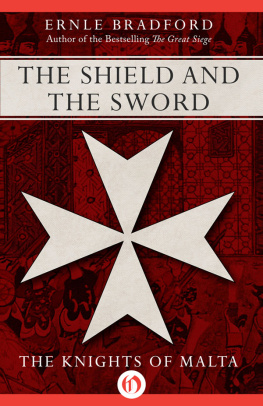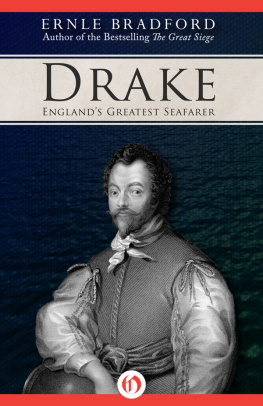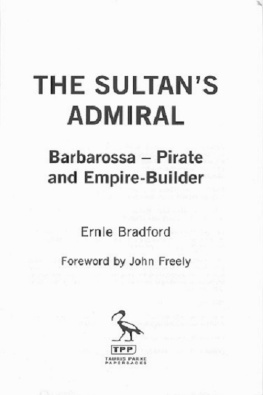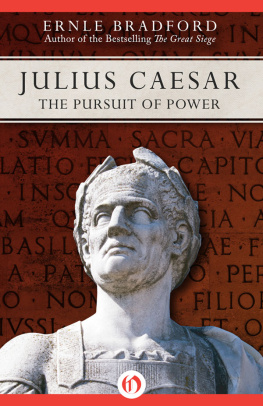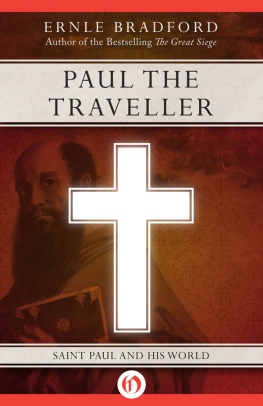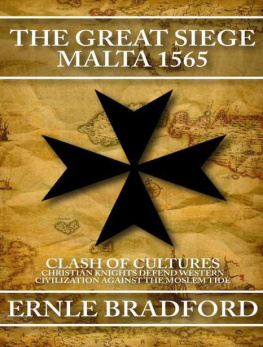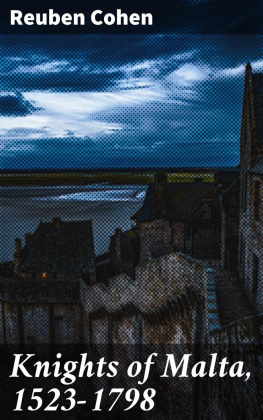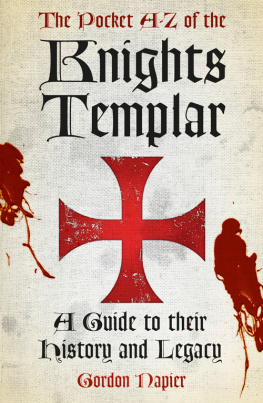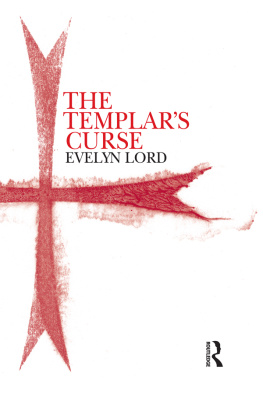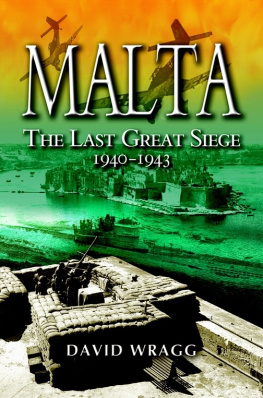The Shield and The Sword
The Knights of Malta
Ernle Bradford

FOREWORD
Anyone who undertakes to write the history of the Knights Hospitaller of St John of Jerusalem of Rhodes and of Malta is at once faced with formidable difficulties: for indeed the history of this illustrious Order is in the large part the history of the Mediterranean covering some 700 years, not to mention the activities of the Order in other parts of Europe and the New World: thus from its earliest beginnings in the eleventh century until the present daya span of more than 900 years!
Ernle Bradford has already given evidence of this scholarship in his previous books, The Great Siege and Mediterranean: Portrait of a Sea, and it is not surprising, therefore, that in his latest book The Shield and The Sword he has once again demonstrated his skill as a narrator and his integrity as an historian.
From the very first pages we sense the thrill and drama of these medieval Knights who were members of a religious order, with their heroic courage, their idealism, their profound Christianity and inevitably their human weaknesses.
The military progress and prowess of the Knights Hospitaller of St John, as they were then known, is recorded with historical accuracy while in every chapter the golden thread of the Orders unwavering fidelity to its saintly founders injunction: to care for our Lords the sick and our Lords the poor is always present. We follow the saga of the great sieges of Rhodes and of Malta, to end, alas, in the cession of the island to Napoleon, the darkest hour in the history of the Knights of St John.
It seemed at that moment that the Order had reached its conclusion, yet the story continues to relate its survival and then its almost miraculous renewal in the twentieth century.
Ernle Bradford has written a concise and moving history of the Order of St John and not the least of his achievements is to have included all the essential facts within the narrow space of some 300 pages.
The Sovereign Military and Hospitaller Order of St John of Jerusalem of Rhodes and of Malta, to give it its full title, is today, as the final chapter indicates, perhaps more active and certainly more widespread than at any time in its 900 years history.
Its sovereignty dating from the capture of the island of Rhodes in 1310, making it one of the oldest sovereign states in Europe, is now officially recognised by thirty-eight states with which the Order maintains diplomatic relations.
The work of the Knights of St John remains unchanged since the days of its founder, to care for the sick and the poor regardless of race, language or religion. This work goes on today in the leper settlements of Africa and elsewhere, in the earthquake area of the Andes, in the swamps of Bangladesh, in the riot-torn streets of Londonderry and Belfast, in the fighting zone of Vietnam where volunteers of the German ambulance corps of the Order have already sacrificed their lives, and in the countless hospitals, dispensaries and homes on four continents.
The Orders 8,500 members in thirty-nine grand priories, sub-priories and national associations, aided by an unknown number of helpers and generous supporters, still maintain their ancient tradition of voluntary service.
Ernle Bradfords The Shield and The Sword appropriately enough appears in the tenth year of the reign of the 77th Grand Master, Fr Angelo de Mojana di Cologna. The Modern Crusade is already launched and the Hospitallers banner of the eight-pointed cross flies as a symbol of international charity and peace in more than sixty countries throughout the world.
QUINTIN JERMY GWYN
Grand Chancellor of the Sovereign Military Hospitaller
Order of St John of Jerusalem of Rhodes and of Malta
ACKNOWLEDGMENTS
I should like to express my indebtedness, as always, to the London Librarythat institution without which few writers like myself could survive (let alone derive great pleasure). I also owe a great debt to the Order of St John itself, in particular to the Grand Chancellor and to the Orders official historian, Fr Toumanoff. Both have been kind enough to read this book in manuscript and to amend my faults. Such errors as remain are mine. Finally I would like to express my thanks to many friends in Malta, especially Sir Hannibal Scicluna (who first, as it were, introduced me to this subject many years ago). Without the Royal Malta Library and the Library of the University of Malta this book would not have been possible.
E.B.
Kalkara, Malta.
July 22nd, 1972.
Chapter 1
CRUSADERS
The Sovereign Military Hospitaller Order of St John of Jerusalem of Rhodes and of Malta, is the oldest Order of Chivalry in existence. It is also the third oldest religious Order in Christendom. It is the only remaining offshoot of that period of history known as the Crusades.
For nearly two centuries, from 1096 to 1291, successive waves of Europeans swept down upon the Levant, first of all to recover the Holy Land from the Moslems, and then to try to hold it and other surrounding areas as Christian territories. They came in their tens of thousandspilgrims, individual men-at-arms, small companies following a feudal lord, and whole armies. The Crusades were more than the famous series of campaigns to which the name has become attached. They were a steady and continuous movement of Latin and northern peoples into that region of the Near East which had become sacred to them because the Founder of Christianity had been born and died there. The Crusades, as generally understood, were the seven great gales out of the west and north that thundered over this eastern land. All the time though, like a tide making up against a shore, there was a steady trickle of pilgrims and freebooters, priests and land-hungry nobles, seeping out of Europe into the brilliant and ever-confusing East.
As an instrument of policy the Crusades were something comparatively new. True, the idea of the Jihad, the Holy War, had long been familiar to Moslems. Had not the Prophet himself enjoined them, Fight in the way of Allah against those who fight against you Kill them wherever you find them It is incumbent upon you to fight even though you may dislike it.? Christians, on the other hand, whose religion was a religion of peace were, in theory at any rate, taught to regard war as evil. The Eastern Church of Byzantium definitely regarded war as evil, and the very last resort after all attempts at diplomacy or bribery had failed. The soldier was not honoured in Byzantium. Indeed, if he killed upon the field of battleeven in defence of his own countryhe was barred from receiving communion for three years. The western position was very different. The aggressive and semi-barbarous peoples of the north could not possibly be contained within the finesse and sophisticated code understood by the Byzantines. Even St Augustine had said that such things as a just war existed, a war against evil at the bidding of God. But this was a little too complicated a thought for Norman barons and their like, whose favourite pastime was laying siege to a neighbours castle and seizing his land.
The Code of Chivalry had evolved in feudal societies through the necessity for some style of conduct, and of rules for combat and war. It had been largely promoted in its early stages by the famous chansons de geste, the songs about Charlemagne and Roland and their companions. Warfare and the heroic spirit had long been regarded in the West, whatever the Church might say, as things that distinguished the noble from the serf. What was new about the Crusades was that they were actively sponsored by the Church and by the Pope himself. They were partly attributable to a religious revival that had begun in western Europe in the tenth century, and which had steadily increased throughout the eleventh. The Crusades can also be seen as part of the eternal interaction between the East and the West which has always been a feature of European and Mediterranean history.

